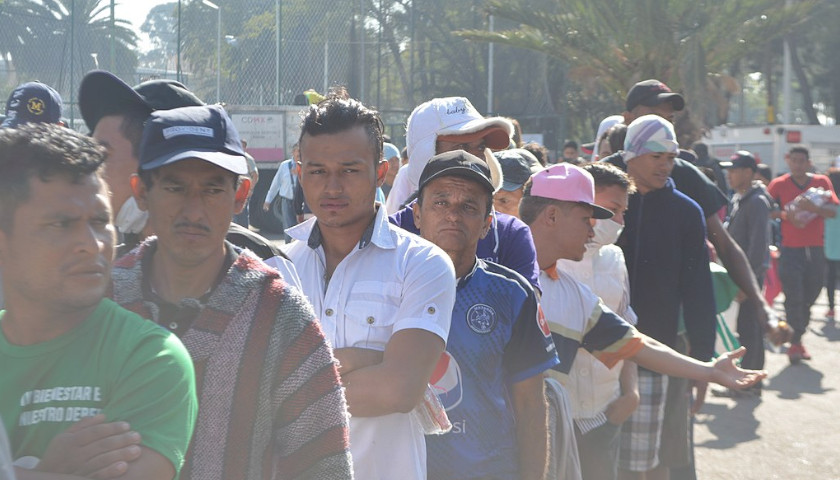by Taylor Tougaw
Immigration remains not only one of our nation’s most pressing issues but also one of the most divisive. The common media narrative boils this topic down to say that progressives are kind and welcoming to those experiencing hardship while conservatives are cold-hearted monsters. Sadly, this narrative hides a much more sinister reality: Charitable immigration can severely hurt the global poor and destabilizes the nations that these immigrants come from. Indeed, by accepting mass amounts of immigration, the U.S. is actively working against the very people it is claiming to help.
If the goal of immigration is to aid the global poor and provide refuge for those experiencing hardship, then we must define who qualifies as such. The global extreme poverty level is defined as anyone living on less than $2.15 per day, and in 2020, more than 700 million people lived in extreme poverty, a number that was an increase of 70 million from prior years because of COVID-19.
For comparison, the U.S. takes roughly 1 million legal immigrants each year. In 2017, there were approximately 10.5 million illegal immigrants living in the United States. There are roughly 45 million migrants, both legal and illegal in the United States as of 2019, meaning the United States has helped a negligible percentage the global poor. And each year, more people are born into poverty than are removed from it through immigration.
What’s worse is that the U.S. doesn’t even take the world’s poorest immigrants. The top five countries of origin for immigrants to the U.S. were Mexico (24 percent), India (6 percent), China (5 percent), the Philippines (4.5 percent), and El Salvador (3 percent). None of these countries are low-income countries on a global standard, meaning that the U.S. is not necessarily taking in those who most need refuge.
Likewise, the people that the U.S. does accept are often the most-needed members of developing societies. In 2018, a migrant caravan began in Honduras—growing to over 7,000 people along the way—with participants aiming to start a new life in the United States. What is striking about this caravan is that it was about 80 percent young men.
These young men are disproportionately important because they overwhelmingly fill job roles sorely needed in developing countries, such as security (police and military), construction (energy, infrastructure, and housing), and physically demanding resource industries (oil, logging, and agriculture). While much of this data is U.S.-based, there are likely underlying reasons for this phenomenon that would cause it to carry across countries.
These male-dominated industries are critical for nations to achieve levels of trade and domestic independence that produce stability and prosperity. In the United States, roughly 54 percent of illegal immigrants are male. Globally, this phenomenon siphons men away and deposits them in developed nations that comparatively benefit very little from their labor. For example, a striking 90 percent of illegal immigrants coming to the UK via boat are male. Without a stable workforce, especially of men, developing nations will find themselves perpetually thrown into cycles of poverty and instability.
Likewise, those being smuggled across the U.S. border are not as destitute as the media likes to portray. Unlike the image of poor migrants searching for a better life, the reality of border crossings is that many of them are wealthy individuals. According to Customs and Border Protection, Central Americans pay roughly $8,000–$10,000 to be smuggled across the border, and those from Brazil or Ecuador can pay up to $15,000.
In some countries, like Ecuador, this equals a full two-year salary or more. And in many cases, these enormous sums are not being paid by the poor and destitute but instead skim the top earners from countries who desperately need them. High-earning citizens are necessary for the circulation of capital, investment in emerging industries, and creation of a robust workforce. The lack of these essential items prevents countries from prospering.
Those who cross the border without paying these fees face increased threats to their life and security. For example, in July of 2022, the FBI rescued 24 migrants in a single house that were being held ransom inside the U.S. by Mexican cartels. Some migrants who can’t pay are used as drug mules by cartels.
While data is hard to pin down, population loss has a severe financial effect on countries. To understand how badly mass migration affects these countries, we need only to look at natural disaster data. In 2017, a massive earthquake rocked Mexico, killing 370 people, injuring at least 6,000, and damaging up to 20,000 homes.
From this disaster, there were roughly 240,000 Mexican citizens who were displaced and unable to work for anywhere from a day to over a year. The lost economic production from internally displaced peoples totaled a staggering $160 million. In 2018, 120,000 Mexicans immigrated to the U.S. This would mean Mexico may be losing as much economic productivity every two years to immigration as it did because of a catastrophic natural disaster.
Despite the media’s attempt at painting any reduced- or anti-immigration policy (even for illegal immigration) as barbaric and cold hearted, the facts remain the same. Removing large swathes of healthy, working-age citizens from developing nations perpetuates the cycle of poverty. For millions across the world, this ensures poverty and instability. The solution may not be simple, but these facts are.
– – –
Taylor Tougaw is a contributor to Intellectual Takeout.
Photo “Migrants” by ProtoplasmaKid. CC BY-SA 4.0.




